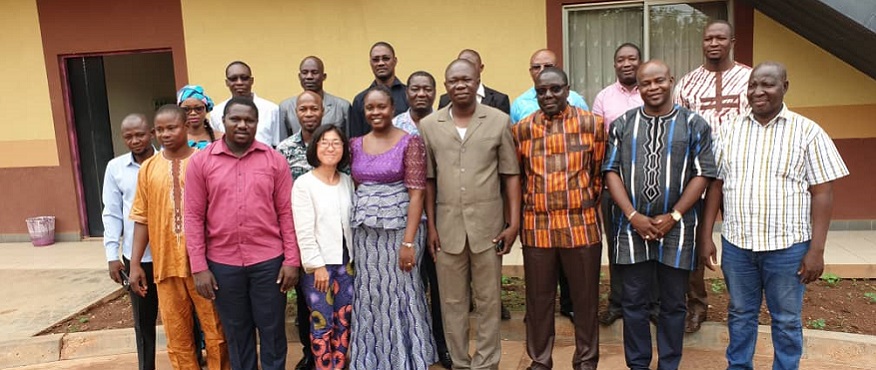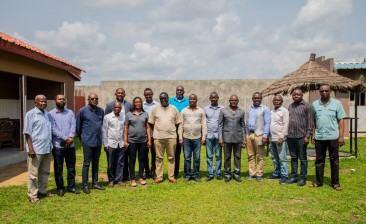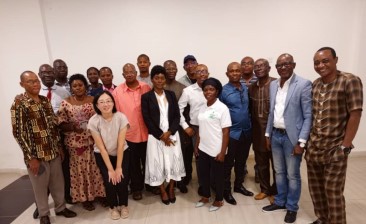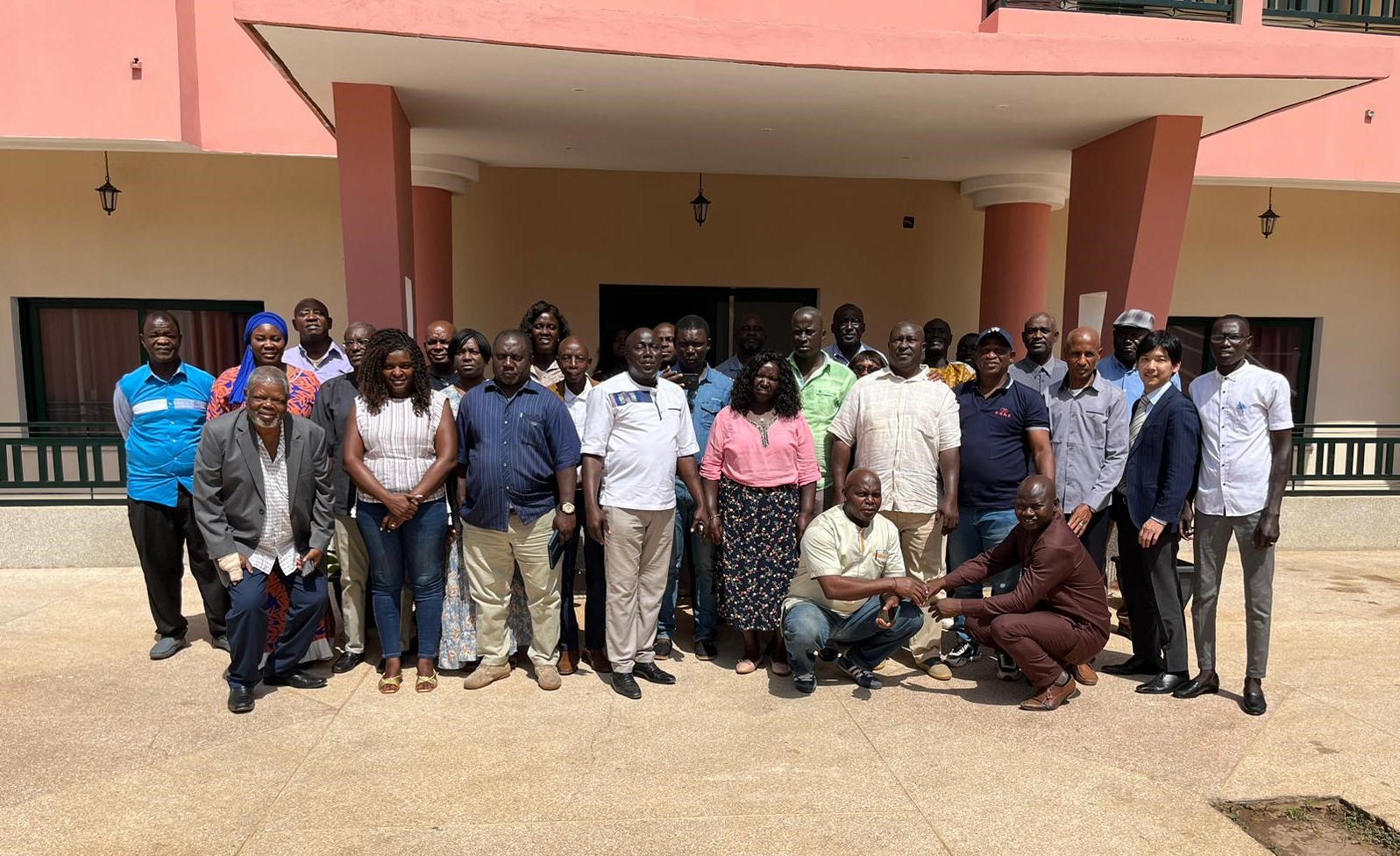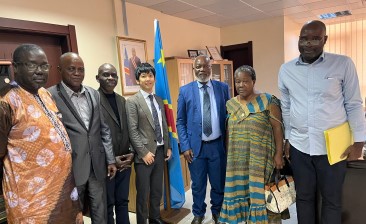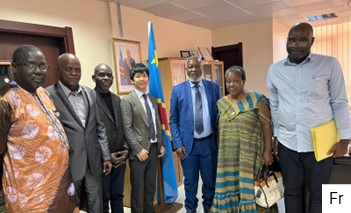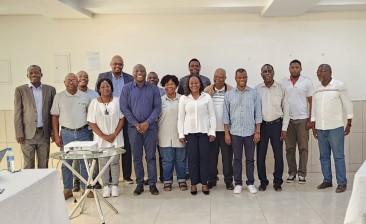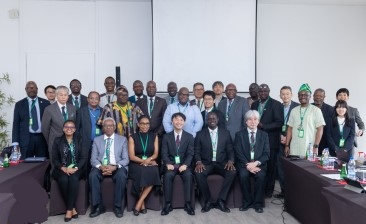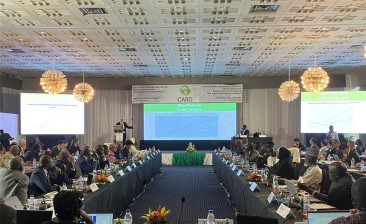Burkina Faso, May 2019
Third NRDS II working week was held in Ouagadougou, Burkina Faso in May 2019
In Burkina Faso, cereals are the staple food of the population. Amongst the cereals, rice occupies the 4th place in terms of the area under cultivation and production. Although there has been an average annual increase of 11% in production, only 30% of the domestic demand for rice is covered by local production. Increasing the national rice production has hence become a strategic importance for the Government. It is in this context that the development of the new rice development strategy (NRDS-II) aims to achieve self-sufficiency in rice by 2025. With the support of the CARD, a third working week was organized by the Ministry of Agriculture and Water Development. The aim of the working week was to finalize the NRDS II.
The working week was conducted at the conference room of PRP between 19th and 26th of May 2019. Representatives of the Agricultural Ministry, donors (GIZ, JICA), Technical Departments of the Agricultural Ministry and producers’ organizations, and the members of the rice Task Force, the representative of and a facilitator participated.
During the workshop, the results of the first two working weeks were recalled, focusing on the objectives, the expected results, the strategic orientations and, the challenges in achieving the objectives of NRDS II. After that, a working group session was organized in order to estimate the costs of the strategy, develop the action plan and the logical framework, and determine the expected impacts of the implementation of the strategy. In addition, the participants deliberated on ensuring the sustainability of the proposed actions.
The participants finalized the NRDS II which includes the terms of reference for all public interventions on the development of the rice sector. The elaboration followed a participatory approach, involving all stakeholders in order to achieve a shared vision of strategic orientations, priority areas of intervention and the strategy to be implemented for the sustainability of the proposed actions.
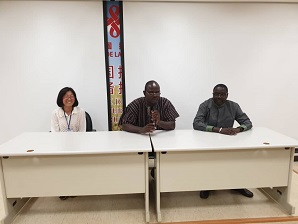
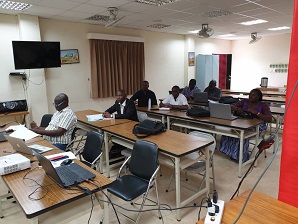
The overall objective of the NRDS-II is “to contribute to the acceleration of the satisfaction of the national demand for local rice in quantity and quality”. To achieve this objective, three strategic axes have been defined with specific actions namely:
- improved rice production in the face of the effects of climate change and population growth,
- promotion of industrialization, marketing, competitiveness and private sector involvement in the rice value chain
- reinforcement of the organization and the capacitation of the actors of the CVR
The NRDS-II will be implemented in two periods from 2020 to 2025 and from 2026 to 2030. The first period consists of accelerating the pace of achieving rice self-sufficiency. The second period will consolidate the gains and generate a surplus for export. In quantitative terms, the NRDS aims to achieve a production of 3,000,000 tons of paddy. To do this, it will be necessary to develop more than 200,000 ha under irrigation schemes, almost half of which with a total water control, and make available to producers 10,500 tons of improved seeds, 17,000 tons of urea and 27,000 tons of NPK.
With a total cost of about FCFA 732 billion, the Government, donors, NGOs, local communities and the private sector, will provide the necessary financing. A rice board will be created to ensure its governance.
The implementation of the strategy will bring many benefits in terms of economic and social development namely :
- An increase in the contribution of the rice sector to GDP, which will rise from 0.3% (8 billion) to 12% (500 billion) ;
- An improvement in the rate of coverage of the national rice demand (from 30% in 20 18 to 132% by 2030) ;
- An improvement of the trade balance by providing equivalent currency earnings to FCFA 400 billion ;
- Greater involvement of the private sector through the creation of almost 2,000 new processing companies and the development of nearly 50,000 Ha of irrigation schemes
- The creation of nearly 420, 000 new jobs in the sector, for the benefit mainly of youth and women, which is almost 20% of the total new job application per year.
- An improvement of the incomes of people at the base of the pyramid (women and youth) which will further improve their access to basic social services.
- The reduction of the energy costs and the carbon footprint through the upgrading of processing units, the use of best practices, the promotion of renewable energy and the promotion of the low energy consuming equipment.
For sustainability of actions, the strategy is based on the following principle:
- The Government focuses on its sovereign role by supporting the establishment of infrastructure (hydraulic dams, rural roads, etc.), capacity building, access to finance and control;
- The private sector will be fully involved in the implementation of the strategy among the rice value chain;
- An on-demand approach will be favored, especially through a better cooperation between actors among the rice value chain.
Currently, many initiatives are ongoing or under formulation that will enable the rapid implementation of the NDS-II. The major initiatives are the Islamic Development Bank and IFAD project on the promotion of the rice value chain and the second phase of the GIZ (PDA) for the promotion of agricultural value chains including rice and a project being formulated by AGRA on irrigation schemes development for rice cultivation.
Upon formulation, the NRDS-II draft will be circulated among CARD steering committee members and development partners for inputs, after which a validation workshop will be organized among wider stakeholders. These activities are expected to be completed before September 2019. The CARD Secretariat will subsequently support the development of project concept notes, which could lead to the implementation of the NRDS II.
(The above photo: Participants, Facilitators and CARD consultant in the workshop in Ouagadougou, Burkina Faso)
